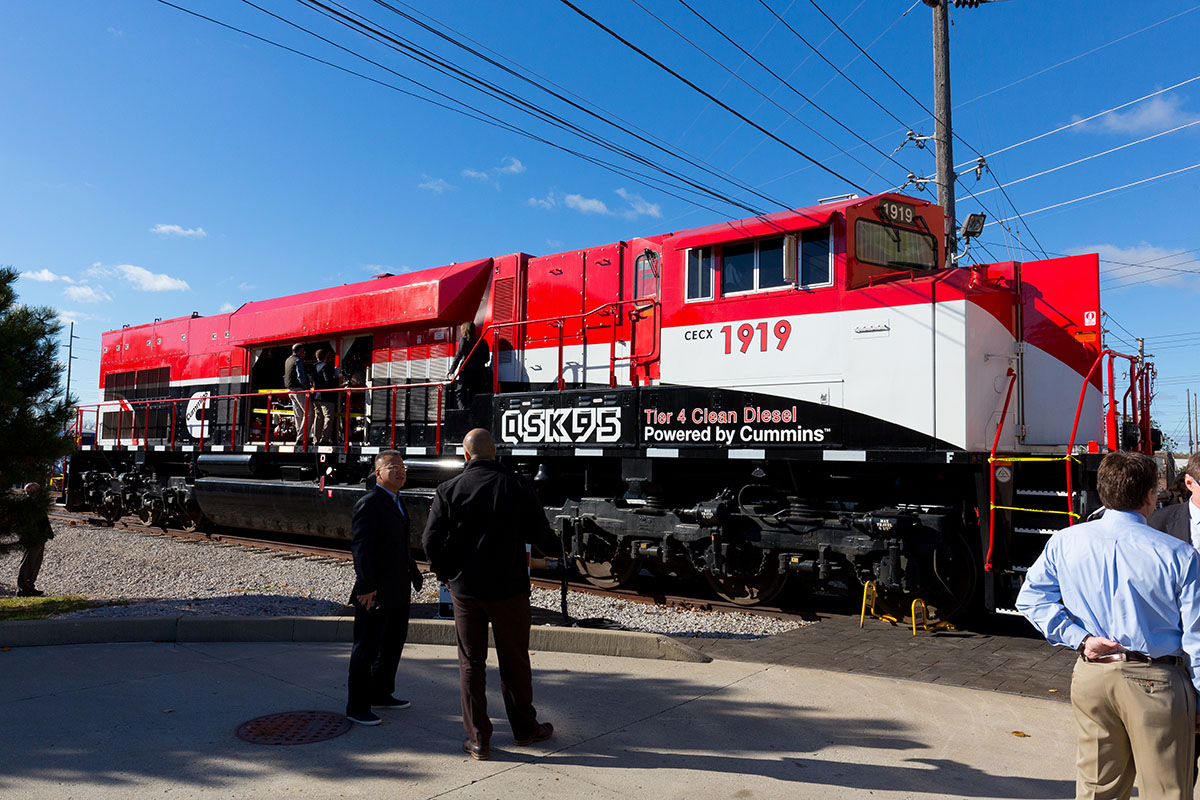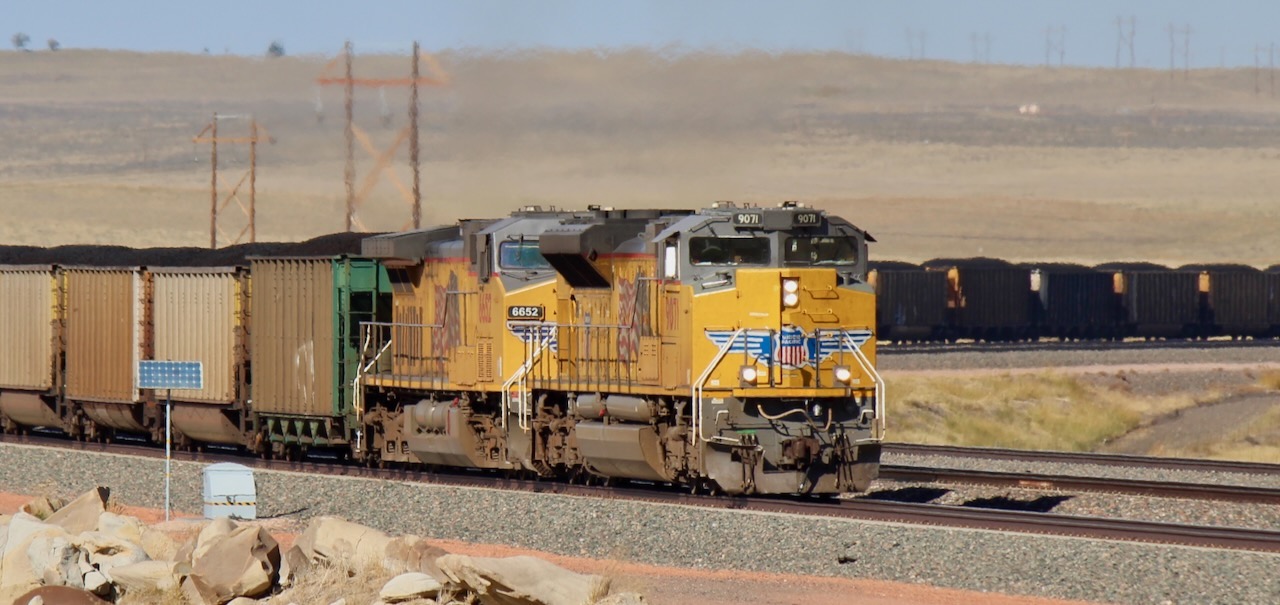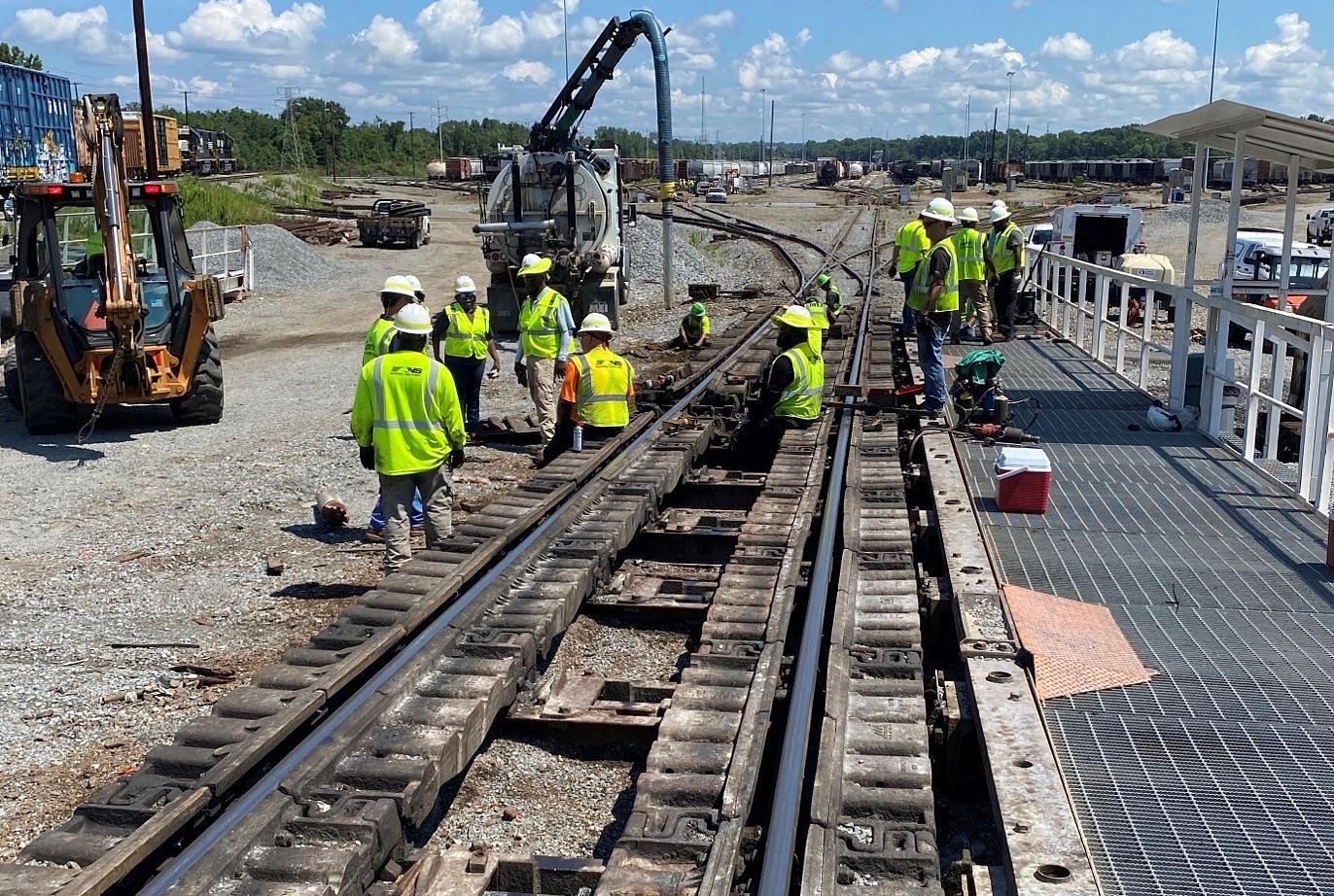Cummins’ QSK95 engine began development in 2011 with an eye to selling in multiple markets and building it in a modular approach that would allow for 12, 16, and 20-cylinder models to be made. With the company’s selective catalytic reduction after-treatment installed, the engine achieves Environmental Protection Agency Tier 4 emission compliance in the U.S. The engine can be configured in three different power outputs: 4,000; 4,200, and 4,400 hp.
Compared to a locomotive engine without modern emission reduction modifications, or a Tier 0 engine, the QSK95 engine reduces nitrous oxide by 89 percent, particulate matter emissions 98 percent, and hydrocarbons by 97 percent while also reducing fuel consumption by 16 percent.
The test locomotive, CECX No. 1919, was built from Union Pacific SD90AC No. 8559. Cummins modified the locomotive by removing all components from behind the electrical cabinet to the rear of the locomotive. The new engine, alternator, and radiator system was installed and tied into the existing Siemens-made alternating current traction inverters and control system.
The fuel tank was partitioned to allow a portion of its volume to be dedicated to storing urea used during the catalytic after-treatment of the exhaust gases.
Mechanical overhaul of the locomotive took place at Sygnet Rail Technologies in Tenino, Wash., and was completed at the Buffalo & Pittsburgh shops in Brookville, Pa., by TMV Control Systems and Brookville Services, under the supervision of TMV Control Systems.
Cummins first contacted the Indiana Rail Road in 2013 about testing the locomotive. Both companies agreed to a testing program that will last one year with the possibility for extending it longer. Locomotive testing began in February 2016 and slowly expanded from local service to road assignments in coal, intermodal, and manifest service across the railroad’s system.















It says that the work was done at Brookville Equipment. It was not. The locomotive work was completed in the Buffalo&Pittsburgh RR shop in Brookville by TMV Control Systems and Brookville Services, and under the supervision of TMV Control Systems (electrical) and Cummins (mechanical).
Wind drag is not really a concern with freight locomotives, which spend most of their time below 45 mph. Even above that speed the drag has a negligible effect on fuel economy because its so heavy and powerful.
@ Bob Withorn
Fuel useage is not decreased because or urea. The QSK-95 is obviously a smaller engine thats where the fuel savings come from.
Achieving tier 4 by using urea is more fuel efficient than by using EGR alone. The class I railroads have indicated that they are not interested in a urea solution due to the investment required at engine facilities. Some regional and commuter railroads are interested in using urea. Another example is Metrolink, which has purchased some EMD F125s which use urea to achieve tier 4.
What would help the environment and fuel economy is to reduce wind drag by streamlining the fronts of locomotives. (Remember the EMD F-7/9 cab locomotives?) Returning to freight cab locomotives would not be a bad idea with the technology of backup cameras replacing the advantage of road switchers.
The Urea solution costs about the same or less than the equivalent diesel fuel volume, depending on how taxes are applied to both. The concern is in setting up the handling facilities for the urea (or DEF as it is commonly referred to). However the OTR trucking industry and construction and agriculture industries made the adjustments well and I suspect the rail industry could as well if future regulations or economics make it preferrable.
So they cut fuel usage by16% using urea treatment. EMD and GE and the class 1s are getting LESS mileage using the NON-urea tier 4s currently being built. Seems to me someone might want to rethink their position a bit, unless urea costs are higher than the fuel savings per loco.
I can’t say about railroad engines, however in OTR trucks 15-20% fuel savings(or more) with DEF against EGR was a what I saw as a driver.
The problem with DEF is you need to have another fluid for the engine. In trucking truck stops started having DEF when the engines that needed it started to be used on the road. DEF like any fluid can be delivered from anything from 1 gallon containers, 55 gallon drums, IBC totes, or bulk storage tanks. Just like fuel.
For railroads it’s just a matter of what will work for them. Of course railroads might want to think again about electrification. Or converting to LNG.
Pueblo testing may not be necessary since the locomotive is technically a rebuild of a SD90MAC-H.
How much did the “shuffling” cost? From Washington state, to Brookville, PA, and then to IN. Do the units need to go to Pueblo next ???